The West Virginia Museum of American Glass at 25
By Tom Felt
Dreams can be compelling and when the dream is big, the outcome can be truly exciting. Imagine a museum that celebrates everything that was made in American glass, from the very earliest years to today’s studio art glass movement. Does that sound audacious? Yes. Does that even sound possible or practical? Probably not – but that is exactly what has grown from the dream of one man a quarter of a century ago and what the Museum of American Glass in West Virginia is doing today.
Six
Dean Six, a highly respected glass researcher and author, was an unknown young man in 1990, with a relatively small dream: to establish a glass research center. When he met Merle Moore, director of the Chamber of Commerce in Weston, West Virginia, her advice was to dream bigger – something that comes easily to Dean. They formed a local glass study club and got funding for a one-day meeting that pulled together local and state officials and resulted in plans being drawn up to create a glass museum and research facility.
The West Virginia Museum of American Glass, Ltd. was incorporated in 1993 and a year later was granted non-profit 501(c)(3) tax-exempt status. And now, 25 years on, it has grown to boast a glass collection without parallel. There are larger museums, but not one with the breadth and variety offered at MAGWV. American rich cut, early flint glass, pattern glass, depression glass (both elegant and machine made), mid-century modern, art glass, lighting, fruit jars, bottles, insulators, glass toilet bowl floats – yes, even glass toilet bowl floats – MAGWV has those and much, much more on display.

From three display cases in the local antique mall, the museum grew to have its own 800 square foot building in 1998. By 2006, that building was bursting at the seams, and MAGWV moved once again, this time to a two-story building with 10,000 square feet of public display space – the very same building that housed the antique mall where the museum began. Amazingly, the mortgage was paid off within five years and a two-story expansion was added a year later. And now, after ten years existence in that space, the collection has grown in a commensurate fashion to fill the building with treasures – and what treasures they are.
It is only possible to describe some of the highlights. One of MAGWV’s earliest and most steadfast supporters is Kelsey Murphy, arguably one of the finest cameo artists in the world. She was the subject of one of MAGWV’s early special exhibits and presented the Museum with a core collection of her work, including a one-of-a-kind set of four vases featuring the Four Seasons of the Cardinal. Technically and artistically, these pieces represent the highest achievement of the art of cameo.
2009
This was a watershed year for the museum. The National Marble Museum became a museum within the Museum, featuring hundreds of marbles ranging from the Akro Agates most visitors played with as children to a selection of some of the finest studio marbles being made today. It was also the year that Blenko Man was commissioned from artist John Zidek. Made entirely of pieces of Blenko Glass, he has become something of a mascot for MAGWV.
And it was in 2009 that the Karl H. Koepke Trust donated an exceptional collection of early flint glass and other EAPG (Early American Pattern Glass, 1850-1910) pieces, then added to the collection of celery vases donated by author Dorothy S. Daugherty, and augmented since with over 900 rare Victorian spooners (spoon holders) from Conrad Bergo and Don and Peggy Wilkinson. These ever-expanding donated collections have formed the nucleus of one of the finest collections of these types in existence anywhere. And as this article was being written, MAGWV was the recipient of another 5,000 pieces of flint and EAPG from Phyllis Petcoff.
Another area where the collection is particularly strong is in its paperweight holdings. MAGWV built a collection of West Virginia artists early on, then acquired several hundred paperweights from Cambridge, Ohio, when the Degenhart Museum closed, and has since made a systematic effort to acquire examples from all over the country. A similar effort for studio artists was inaugurated in 2014 with the creation of the United States of American Glass Collection. The ultimate goal: have at least one example of studio art from every state.
2014 was also the year that the museum held its “Weekend of 1,000 Lamps” – inviting volunteers from all over to help unpack and identify the newly received John and Peggy Craven Lamp Collection of oil and kerosene lamps. When the weekend was over, it turned out that an underestimation had occurred – it was actually the Weekend of 2,167 lamps!
Two features on display in the Gallery are a mural painted in 1949 by Robert Young for the Carnegie Museum’s exhibit on early Pittsburgh Glass and a set of stained glass doors crafted by the Baut Studios for Saint Patrick’s Catholic Church in Weston.
2016
October 1, 2016, was another milestone for the museum with the opening of the Martin Massman Collection of Steuben Glass. Believed to be the second largest collection of contemporary Steuben in the world, it features unsurpassed crystal creations by some of the finest glass cutters America has ever produced.
The following year saw the debut of the museum’s Lady Jane stained glass dollhouse. Created by Linda Young for Barbara and Bernie Bischoff in 2001, this incredible house has 13 rooms and is 5 foot by 7 foot. It has quickly become one of the highlights for visitors of all ages. It is adjacent to the children’s interactive area, where adults tend to have as much fun as younger visitors.
2017
This year records were set for the number and variety of donations received. In addition to the EAPG mentioned above, exceptional collections of rich cut glass, vaseline, Morgantown, creams and sugars, ashtrays, and opalescent glass are all awaiting processing as this article is being written.
And that’s just the glass. MAGWV also boasts a large research library as well as an unusually fine archival collection, with thousands of original catalogs, factory records, photographs, and other ephemera. Of especial interest to glass historians – and labor historians – are the complete archives of the American Flint Glass Workers Union, which were placed in the Museum’s custody in 2009 when the AFGWU became part of the United Steelworkers Union. These materials, along with our other archives, are available for use by visiting researchers at no charge, and form the backbone of MAGWV’s educational and publications outreach.
To date, 148 monographs have been produced – pamphlet-style publications on topics that may not be extensive enough to become books, but that make available information on both obscure and well-known topics. Some of the most popular monographs cover subjects as diverse as Kings Crown pattern glass, Ravenswood marbles, punch bowls, Bischoff, Sandwich patterns, candy containers, early milk glass, Rainbow Art Glass, Czechoslovakian glass, Hawkes, Culver, and Blenko. For a complete list, contact the museum.
In 2013, MAGWV created the Glass Flakes Press imprint to publish actual books. There are now eight titles in print, with others soon to come. These include a Carl Hosch catalog reprint and books on paperweights, bread plates and butter dishes, Cumberland area glass, hen on nest covered dishes, and modern Steuben, as well as a previously unpublished collection of United States Glass Co. pattern catalogs. The Museum also publishes a quarterly magazine, All About Glass, included at all membership levels.
Educational events are an equally important part of MAGWV’s mission. Even before the museum was incorporated, it sponsored its first Glass Gathering. This research conference includes visits to glass factories, demonstrations by glass blowers, tours of other museums, and presentations by renowned experts in glass history. Returning every two or three years to Weston, WV, it has been held in locations as far apart as Indiana, Canada, Pittsburgh, Cleveland, New Jersey, Cumberland, and last year, White Mills, Pennsylvania. It will return to Weston this year on October 26-27, 2018. The Museum also sponsors an annual American Mid-Century Modern Glass Symposium, which will be held August 11, 2018 this year.
Twenty-five years. In some ways that seems like an eon but in other ways, it is just yesterday as the Museum of American Glass begins its next twenty-five years. The organization continues to grow. The dream is as strong as ever. Plans are in progress to expand the available storage space, with a current campaign underway to raise funds to renovate the attic. The public display area is also slated for expansion.
While the museum will continue to happily – and gratefully – accept donations of glass, the emphasis now is on increasing the membership and attracting financial support. The museum is open every day, Monday through Saturday, 9:30 a.m. to 5 p.m., and Sunday, 1 to 5 p.m., with free admission. You can also find records for over 40,000 pieces from the collection in our virtual museum at magwv.pastperfectonline.com. For further information, call 304-269-5006 or email glassmuse12@gmail.com. Come dream with us!


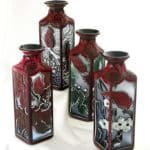
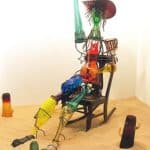

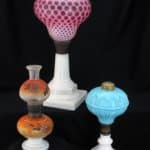
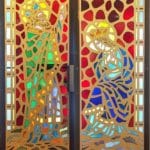


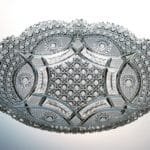
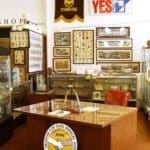



Related posts: